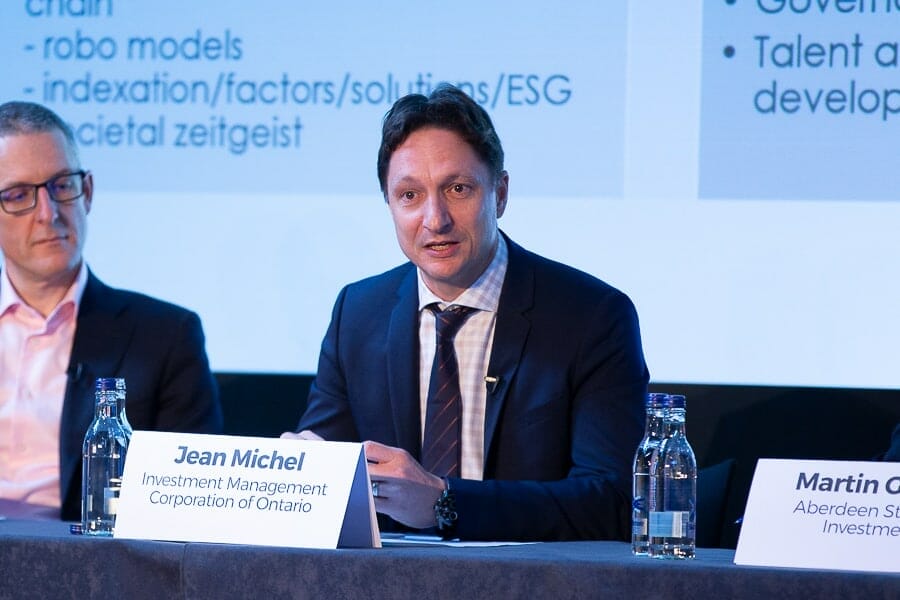Innovation is more important than ever given the uncertain and ambiguous times that lie ahead for institutional investors like climate change, political dysfunction and poor returns. “Returns can only come from an ecosystem that works and we need innovation to do this,” said Roger Urwin, global head of investment content, Willis Towers Watson speaking at the Fiduciary Investors Symposium at Cambridge University.
The combined impact of fee compression, a shift from investment in public markets to private markets and from active to passive strategies are also requiring innovation, said Martin Gilbert, chief executive, Aberdeen Standard Investments. Innovation needs to drive a new efficiency, something that the asset management industry hasn’t had to think about in the past given the sector’s 40 per cent operating margins, he said. “We do have to change our model and make ourselves more efficient.”
The asset manager has innovated with new products and fees, like its AI factor-based fund, a collaboration with Mitsubishi UFJ Trust Investment Technology Institute, and other low-cost products using smart beta. However, Gilbert noted that raising money for new funds was difficult and took time. He also said that active management, particularly in China A Shares, still has an important role.
At RPMI Railpen, investment manager for the £28 billion ($37 billion) pension fund serving the UK’s railway workers, innovation has become engrained in broader investment strategy, explained Richard Williams, chief investment officer, Railpen. The pressure to produce high returns is unabating and it is difficult to achieve stellar performances by “following the crowd.” The pension fund has hired younger, dynamic staff and is mindful that its new focus on internal management doesn’t shield it from ideas coming from the outside. “Innovation for us is about culture; culture is key,” said Williams.
Here the focus is on tactical and larger, strategic innovation. On one hand, the fund has set about encouraging tactical changes whereby individuals are rewarded and encouraged to seek change and come up with ideas. On a more strategic level, the fund is building innovation in its culture through collaboration with other investors, like Capital Constellation, a partnership with Alaska Permanent Fund and Kuwait’s Public Institution for Social Security (PIFSS) to better access private markets.
But innovation is difficult because asset owners prize trust, stability and the status quo. “If an asset owner has a star asset manager, they want to lock them in,” he said. Moreover, asset owners are already efficient organizations, something that does not nurture or encourage innovation where experimentation must be allowed to fail.
Jean Michel, chief investment officer, Investment Management Corporation of Ontario said that innovation in the future must increasingly focus on better access to private, illiquid markets. “We need to change how we access illiquidity,” he said. This process will have positives and negatives. Investors like the lack of volatility in private markets but this will change if more investment flows, and price discovery makes private markets look more like public investments. He also sounded the importance of culture in building innovation. “So many organizations have the skills and ideas to innovate, but when it comes to trying to convince stakeholders and move forward, the culture says no,” he said.




